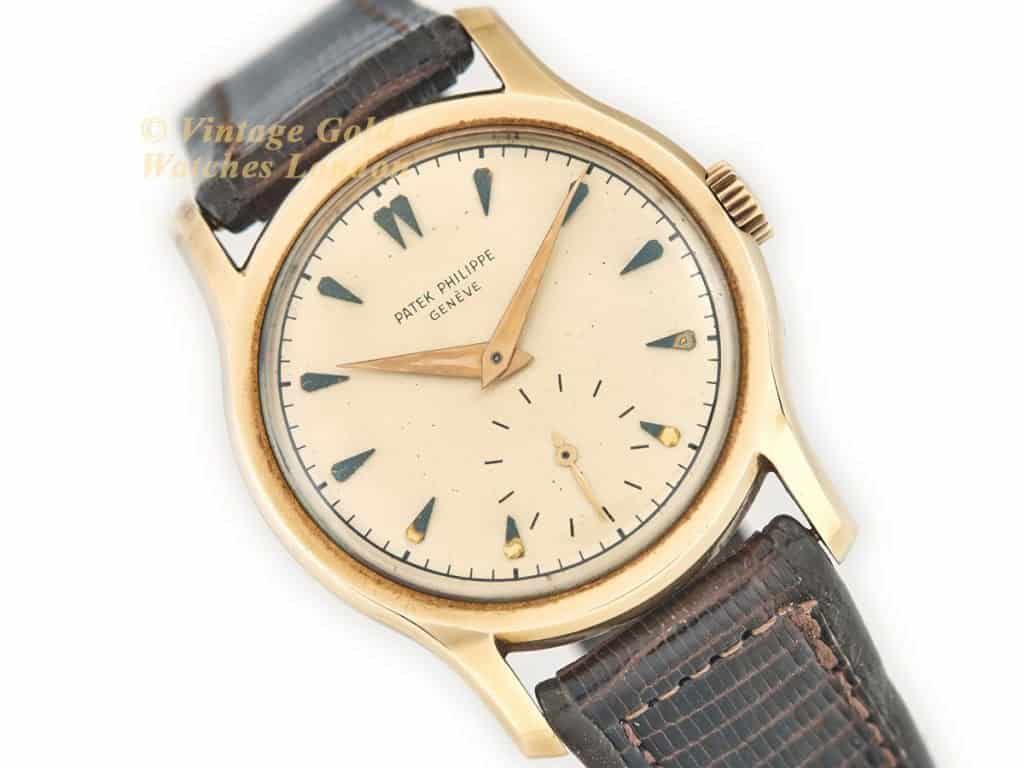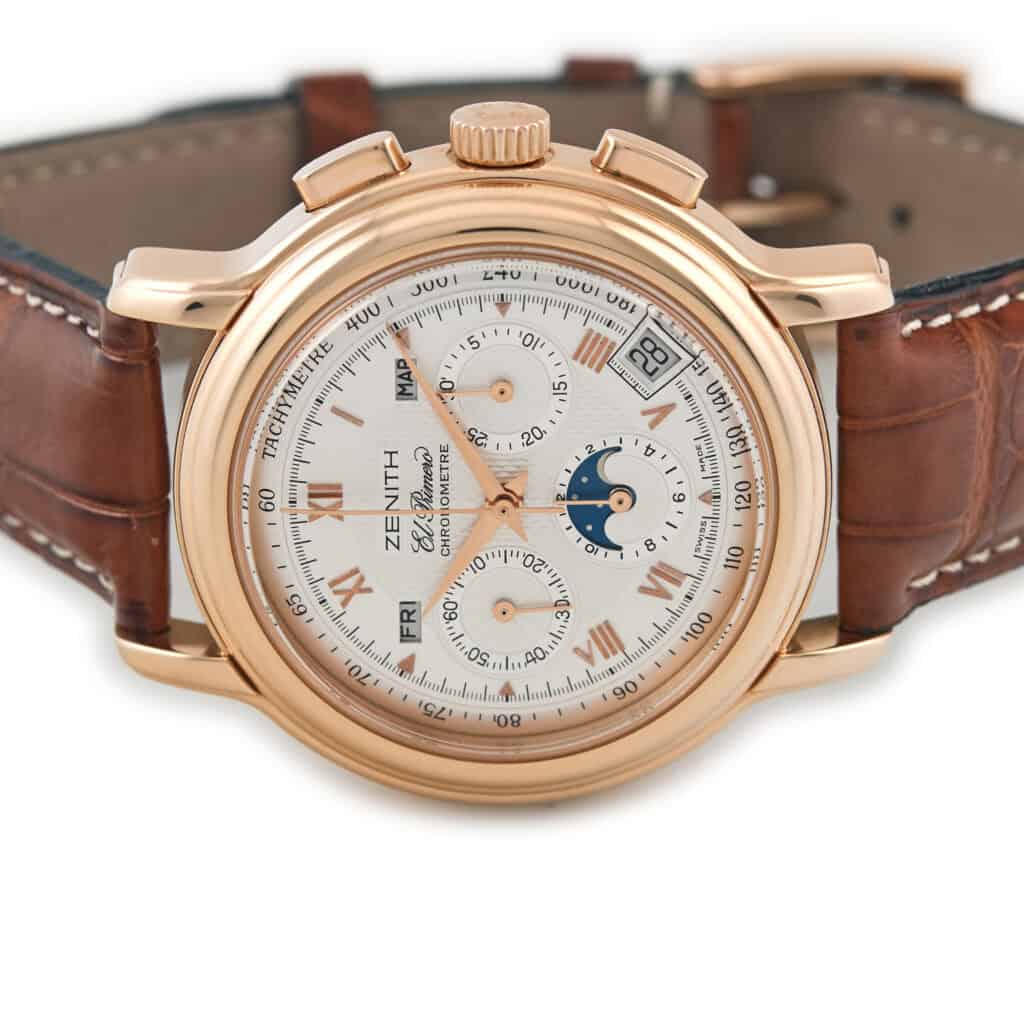By Alan Wood
Discover the key differences between vintage and antique watches, from age and collectibility to value and wearability, in this guide for curious collectors.

Alan Wood, founder of Vintage Gold Watches, is a trusted vintage watch dealer with over 35 years of private collecting experience. His deep knowledge and infectious passion for mechanical timepieces have earned him a highly respected reputation in the industry. Vintage Gold Watches, established in 2011, has become a reputable dealer thanks to Alan’s expertise and a skilled team of restorers. Alan’s love for vintage watches started as a young Mechanical Engineer and grew into an obsession. He believes the finest watches were made in the 1950s, ‘60s and ‘70s, and he is thrilled to share them with others.
Unpack the terminology and timelines that shape how collectors, dealers, and enthusiasts understand the age and value of timepieces.
When it comes to collecting timepieces, definitions matter. The words we use – vintage, antique, pre-owned – aren’t just semantics. They help shape how watches are valued, discussed and even marketed. And while these labels often overlap, each carries its own distinct meaning and weight.
For new collectors, this can be confusing. Does “vintage” just mean old? Is every pocket watch an antique? And where does something from the late 1990s fit?
Here, we break down the difference between vintage and antique watches, explore how age affects desirability and look at why these terms continue to matter in 2025.
First, the Basics: Pre-Owned vs. Vintage vs. Antique
‘Pre-owned’ is the most neutral and catch-all term. It simply means a watch has had a previous owner, whether that’s someone who wore it for 20 years or someone who flipped it after six months. This is the category where almost all watches start once they’re no longer ‘new’.
‘Vintage’ and ‘antique’ are more specific – and more emotionally resonant. These words imply age, but also character and collectibility. In the watch world, the following broad guidelines are commonly accepted:
- Vintage watches are typically 20 to 30 years old or more.
- Antique watches are 100 years old or older.
While these aren’t legal definitions, they are widely used benchmarks in horology, the auction world and among collectors.
When Does a Watch Become Vintage?
This is perhaps the murkiest category to define. Most collectors agree that a watch becomes ‘vintage’ somewhere between 20 and 30 years after it was made. That means we’re now firmly seeing 1990s and even some early 2000s pieces described as vintage, especially if they mark a turning point in design or represent the last of a certain movement type.
But vintage isn’t just about the date. It’s also about context – how a piece fits into the evolution of horology, what it represents stylistically and what it tells us about the era it came from. A late-1980s Patek Philippe Calatrava may sit next to a 1970s Heuer Autavia and a 1995 Rolex Explorer II on the same vintage dealer’s tray, even though their ages vary by decades. They’re united by their era-defining status.
It’s worth noting that vintage as a concept has its origins in winemaking. ‘Vintage’ originally referred to the year a wine was harvested. In the mid-20th century, the term crossed into fashion and collectibles, eventually taking hold in the watch world.

And What About Antique?
‘Antique’ is more clearly defined: a watch is typically considered antique if it’s at least 100 years old.
This classification includes many early 20th-century pocket watches and the first generation of wristwatches. These are timepieces that pre-date the modern era of mass production and often feature hand-finished movements, enamel dials or unusual case shapes that are rarely seen today.
Brands like Longines, Omega and Waltham produced watches in the 1900s-1920s that are now firmly antique, offering a fascinating glimpse into the dawn of personal timekeeping. These watches often require a different collecting mindset – one focused on mechanical curiosity and historical intrigue, rather than resale value or daily wearability.
While not every antique watch is highly valuable, many carry significant horological interest due to their early innovations or links to key moments in watchmaking history.
Why These Definitions Matter to Collectors
You might wonder: does it really matter if a watch is called vintage or antique? For serious collectors, the answer is yes – for several reasons:
- Pricing & value: Vintage watches often fetch higher prices than pre-owned pieces, especially if they’re in original condition, feature rare dial variations or come from iconic lines. Antiques can be more variable – some are highly prized, while others remain surprisingly affordable despite their age.
- Desirability: Terms like “vintage Submariner” or “antique pocket watch” carry a certain cachet. They immediately position a piece as collectible, even if the watch itself isn’t especially rare.
- Condition & wearability: Vintage watches can often still be worn daily, provided they’re serviced and sealed. Antique watches, especially pre-1920s pieces, are usually better suited to occasional use due to their fragility and limited water resistance.
- Emotional connection: Many collectors are drawn to a specific era – whether it’s the clean design of mid-century tool watches or the ornate styling of Edwardian pocket watches. Labels like vintage and antique help guide those emotional preferences.
Dating a Watch Accurately
Determining a watch’s age isn’t always straightforward. While some manufacturers – Omega and Longines in particular – maintain helpful archives, others are less transparent. Serial numbers, case engravings, movement types and hallmarks all play a role in narrowing down a watch’s production year.
In the UK, gold watches will usually bear a hallmark with a date letter corresponding to a specific year. While this confirms when the case was hallmarked, it doesn’t always indicate the exact manufacturing year, especially if parts were assembled separately.
Trusted dealers, watchmakers and auction house archives are often your best bet when trying to date a particular piece – especially when factory records are unavailable.

Is One More Collectible Than the Other?
The answer depends on what you value most. While antique watches hold enormous charm and historic interest, they don’t always command the same market prices as vintage steel sports watches from the mid-to-late 20th century.
Take these two examples:
- A 1915 gold pocket watch by a respected Swiss maker may sell for under £1,000, despite being fully functional and over a century old.
- A 1970s Rolex GMT-Master with a faded ‘Pepsi’ bezel might command £12,000 or more, thanks to current collector trends and brand power.
That said, collecting shouldn’t be driven solely by potential resale value. Many collectors focus on acquiring what they love – whether that’s a slice of early aviation history, the quirks of 1970s design, or a sentimental birth-year piece.
The Rise of Neo-Vintage
As time marches on, we’re now entering the era of neo-vintage. This refers to watches from the late 1980s through to the early 2000s – often mechanical watches that were produced during the Quartz Crisis or just after it.
Neo-vintage pieces are becoming increasingly desirable thanks to:
- Their robust mechanical movements
- Transitional design elements
- Increasing rarity as more collectors seek them out
Watches like the Audemars Piguet Royal Oak 14790 or early Zenith El Primero models from the ’90s sit at the crossroads between old-world craftsmanship and modern utility.

More Than Just Age
In the end, ‘vintage’ and ‘antique’ are useful labels – but they’re not everything. A watch’s true value lies in the story it tells, the hands that have worn it and the enduring connection between craftsmanship and time.
Whether you’re drawn to the clean lines of a 1960s Omega Seamaster, the engineering elegance of an 1880s pocket chronometer or the chunky charisma of a ’90s diver, it all comes down to personal taste – and the joy of the hunt.
Stay informed on vintage watch collecting by signing up for the Vintage Gold Watches newsletter, for expert insights, latest arrivals and market trends straight to your inbox.


